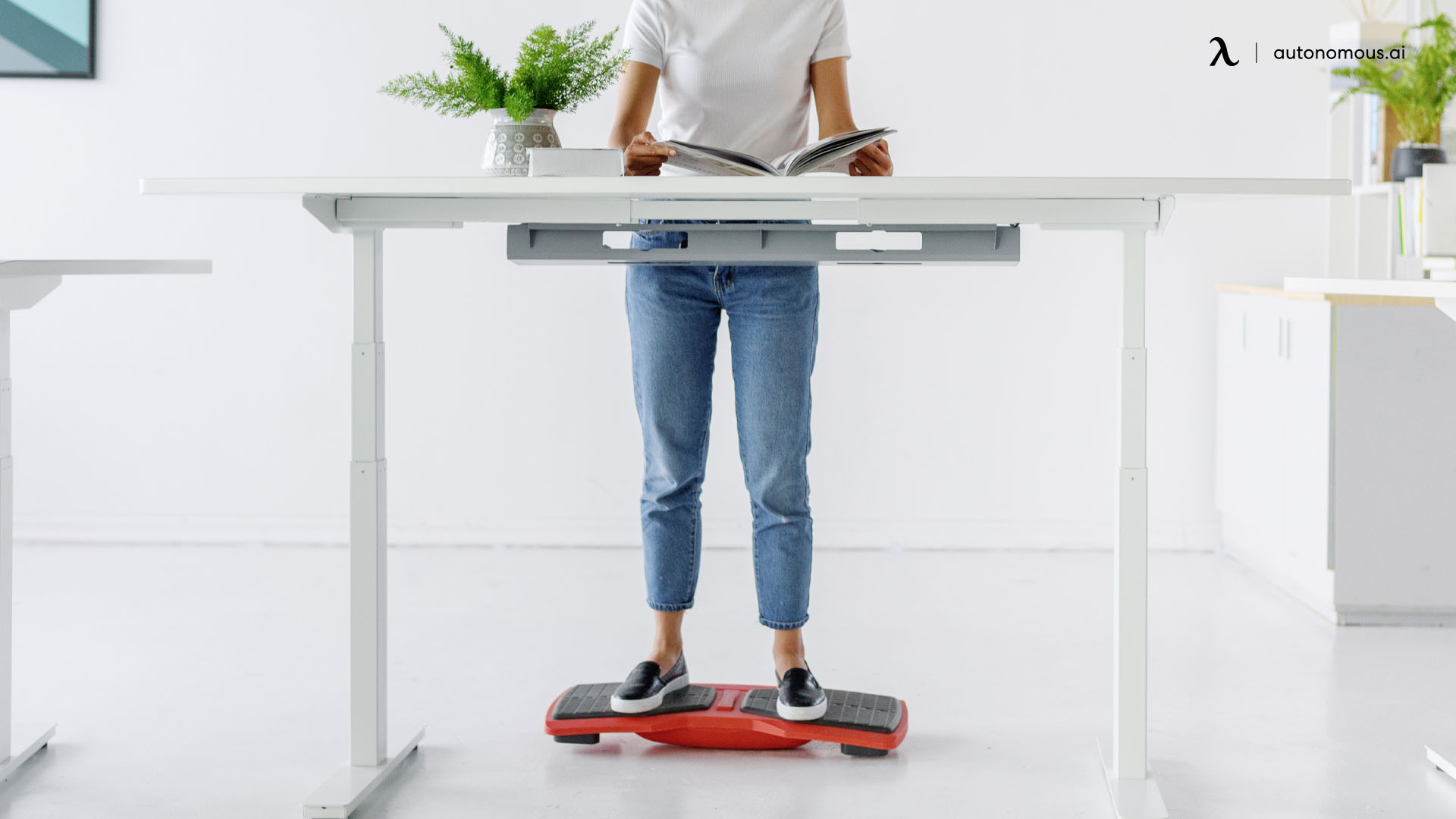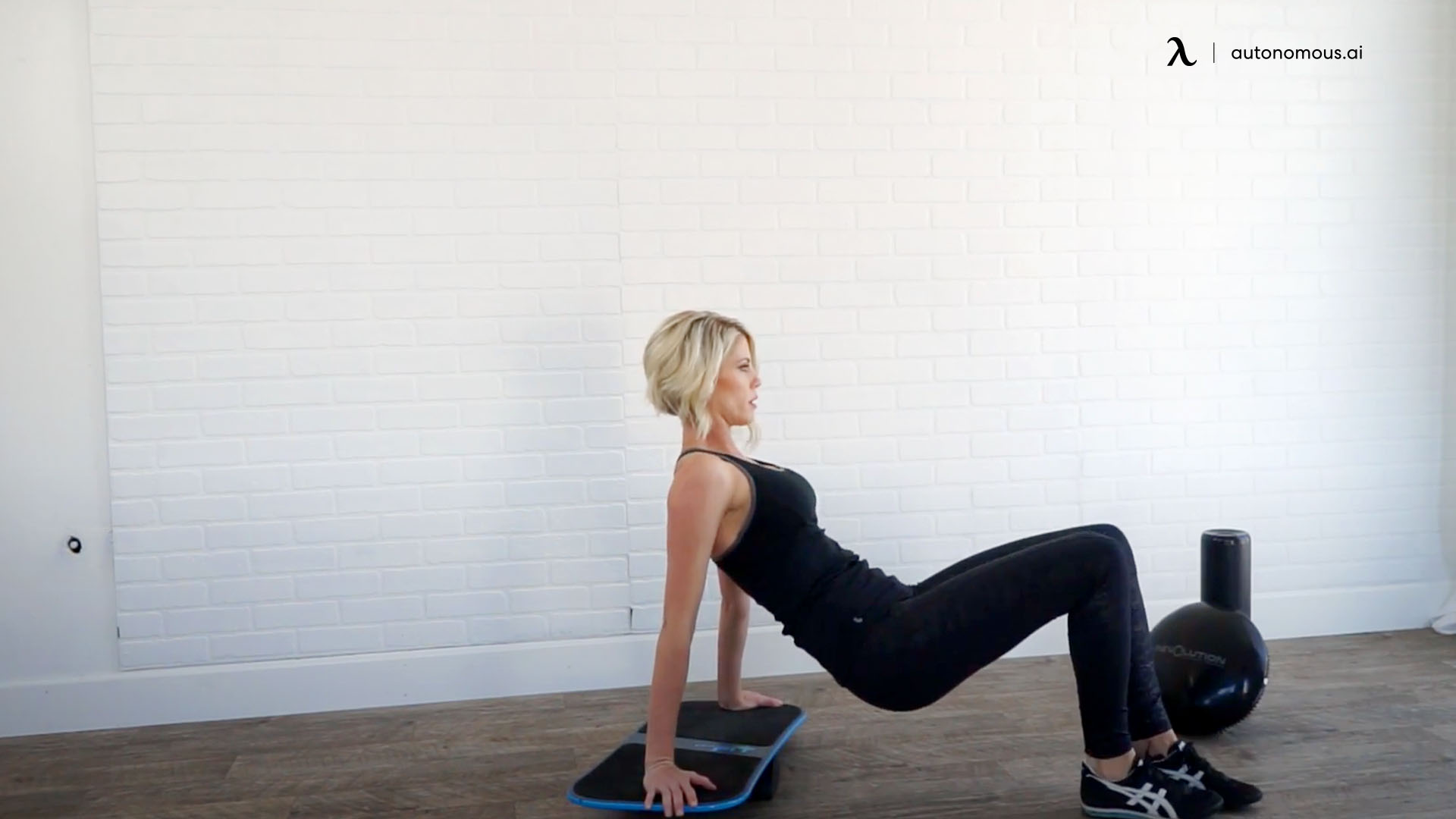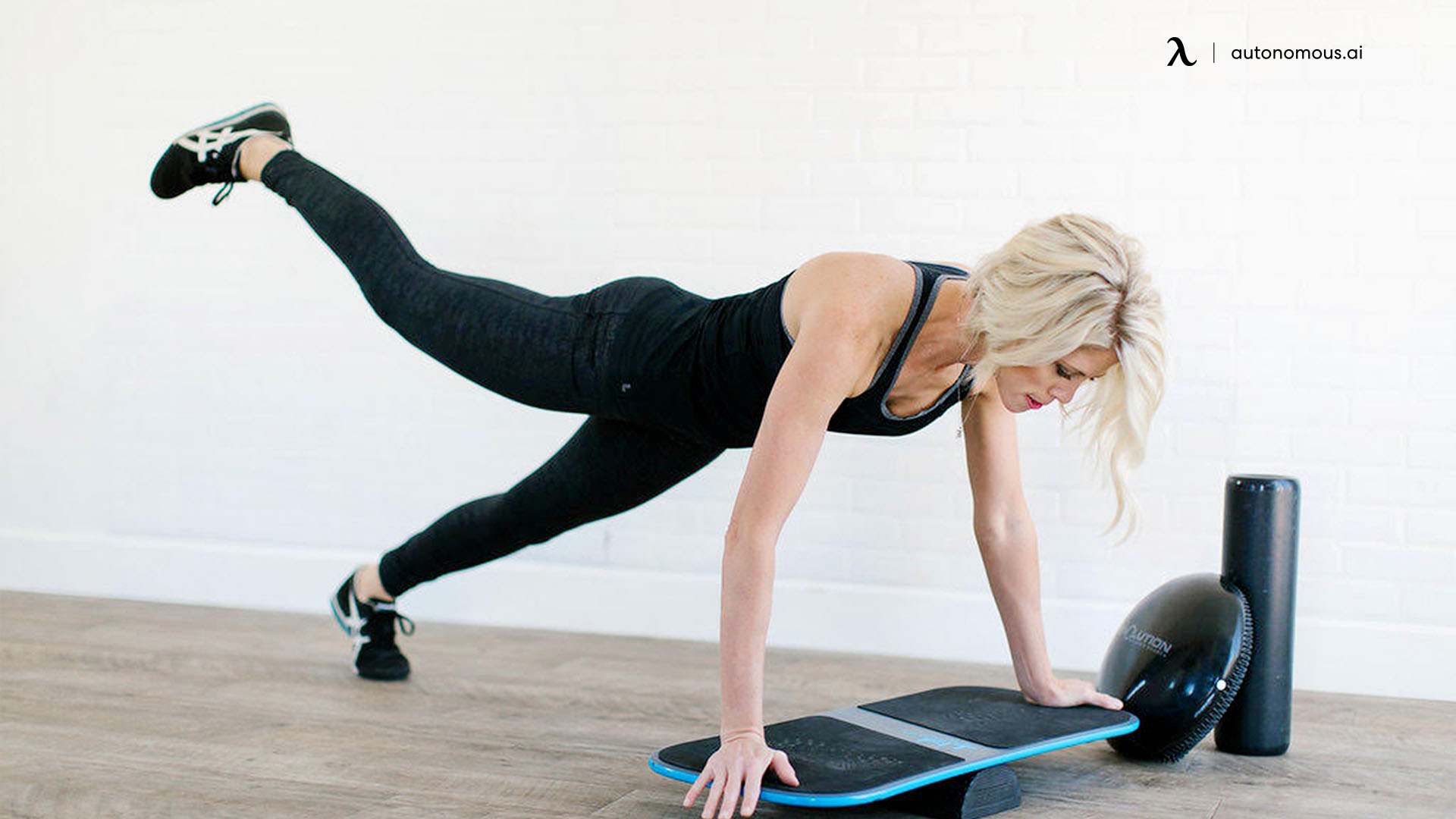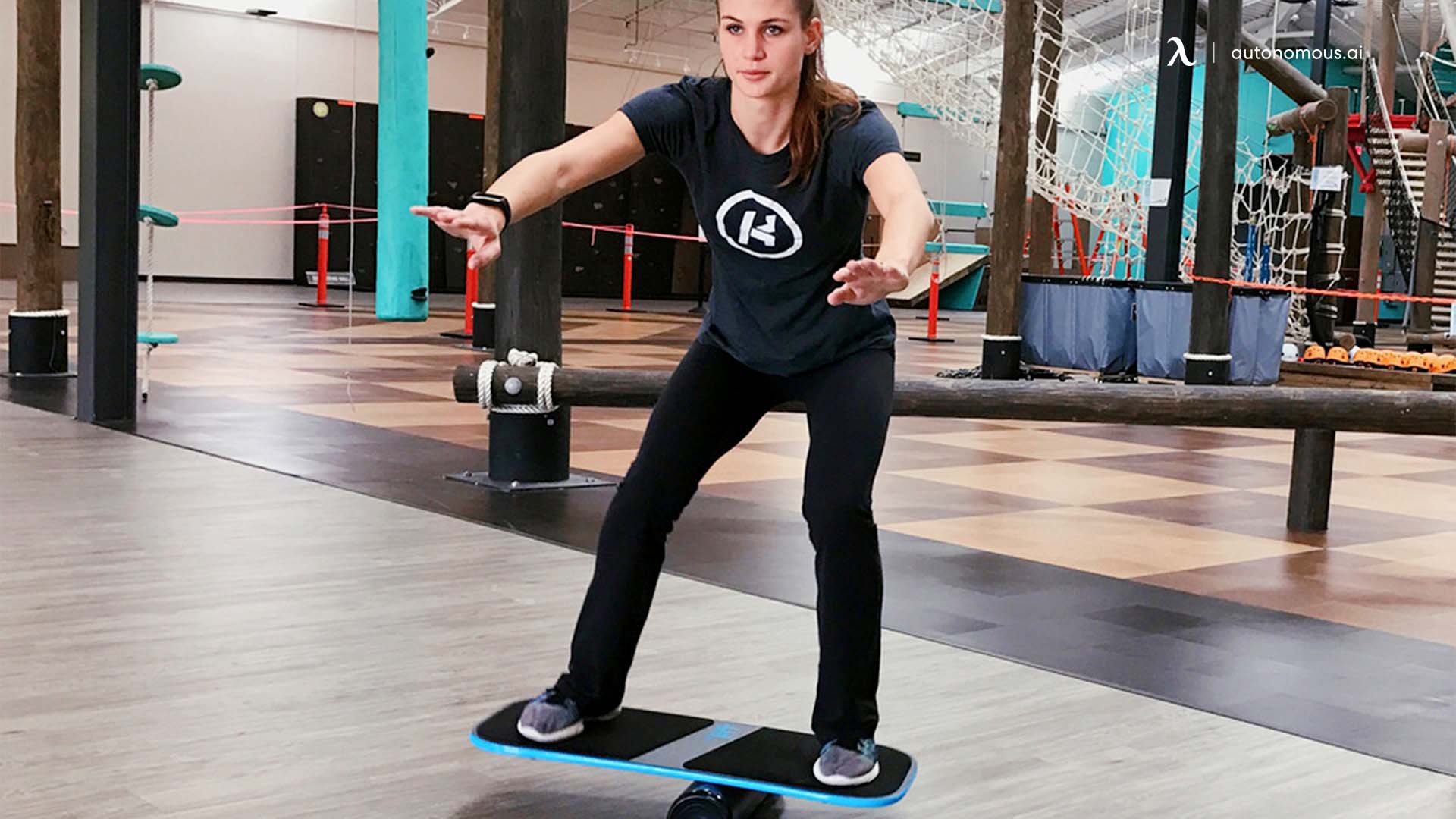
Top 15 Balance Board Exercises for Beginners to Pro 2024
Table of Contents
When used for exercise, balance boards have numerous advantages. Because the action is inherently unstable, a wide range of muscles are engaged at any given time rather than just one. Balance board exercises that are simple on the ground can unexpectedly take on a new life and put you to the test in a completely new way.
Balance boards allow you to put your mental and physical abilities to the test. However, it isn't the normal sort of exercise that many of us are used to. Therefore, whether you are a first-time boarder or a professional border, we have broken down some of the finest wobble board exercises you can do to feel the advantages!
Balance Board Exercises for Your Lower Body
Clearly, even the most basic applications of your balancing board will provide numerous benefits for your legs. Here are a few alternative strategies to target specific muscles if you are looking for a little more of a challenge.
1. Squat and Hold (Beginner)
Get your balance by standing on the board. Gently lower yourself into a squat position, hold for a few seconds, and then slowly rise back up. Repeat.
Finding exercises that perform well on stable ground and repeating them on the board is one of the greatest ways to approach balancing board exercises! Because of the significant benefits it may provide to your lower body muscles, the squat is a go-to and classic for many people.
By putting the idea of a squat on an unstable basis, you get all of the advantages of a traditional squat plus more. The Autonomous Balance Board is an excellent option for this exercise.
2. Jump and Dip (Intermediate)
Stand with your legs shoulder-width apart on the balance board. Jump in and land with your feet in the same position when you've regained your balance. Return to a standing position by dipping your body down. Regain your equilibrium and do this balance board workout again.
When you add a small leap to the squat workout, you get a whole new set of difficulties and advantages.
Not only must you push off equally with both feet to keep the board level enough to land on, but your entire lower body must respond rapidly to regain your balance when you land.
3. One-legged Balance (Pro)
Get your balance by standing on your board. Slowly lift one leg off the board by moving your feet to the center. Hold for as long as you can. Repeat with the opposite leg.
We want to concentrate all of the board's obstacles onto
one leg for this expert-level exercise. Consider the exercise to be a board-based half-moon yoga position. Taking the board's imbalances while using both legs and increasing them to work on just one leg puts your leg muscles to the challenge!
Rather than risking an ankle injury by going side to side, we propose facing the board so that your foot is rocking back and forth.
This can be a strenuous workout for your ankle and leg muscles, so make sure you stretch before and after! The Revbalance FIT Balance Board is a great option for this exercise.
Balance Board Exercises for Your Core
Your core is essential for maintaining your equilibrium and moving your entire body. We should all be thinking about maintaining and developing strong core strength, and the balancing board shines at helping us do so.
Many people believe that their 'core' is only their abs, but it is actually a composite of many muscle groups and the musculature of the entire trunk. It's not only about gaining a six-pack!
4. Sit Throughs (Beginner)
Begin by placing your hands on the board and standing to the side on your toes. Swing your left leg across your body to the right side while keeping your hands on the balance board. Standing on the opposite leg, twist your body with the sweeping leg. Hold the extended point for a few seconds before returning to the starting position. Repeat on the opposite side.
Sit-throughs may appear to be a break-dancing technique, but they're a great method to strengthen your lower abs, obliques, and transverse abs. It's a terrific mix of balance and agility, as well as a good way to strengthen your muscles.
Sit-throughs are also a wonderful technique to tone your shoulders in addition to being a great core burner. All of your muscles are functioning and moving together as a result of the frequent movements and modifying your body position, which helps your general coordination.
5. Wide Leg Plank (Intermediate)
Place your hands, arms straight (or elbows and forearms) on the board and stand (or kneel) on the ground with your body stretched, facing the side of the board. Hold the plank position for 30 seconds. Rest.
The plank is infamous in all types of workouts, but it always merits a spot since the benefits are undeniable!
By adding the balance board to a conventional plank, you'll be putting your core to the test as a whole instead of focusing on one muscle group in particular. Your core will undoubtedly be on fire as a result of the unstable base for your arms.
Using a wider stance at the start can help you acquire a better understanding of the differences and movements from a typical plank on the floor, and you may make it more difficult by putting your legs closer together.
If you're comfortable with this, you can add variety to this easy bance board exercise by lifting one leg up then the other during the plank or switching between the positions by resting on your forearms and elbows and straight arms throughout the plank.
6. Rocking Plank (Pro)
Place one foot in front and the other in behind on the board. Your elbow should be far enough away from the floor for you to be completely extended. To make a straight line with your body, raise your torso and tighten your abs. Hold the position for 30 seconds. Rest for a moment before repeating the process in the opposite direction.
That's right, for our expert core exercise, we are going for another plank variation. Sorry. This plank variant is a terrific method to engage your obliques while still getting all of the advantages of a traditional plank. It's a terrific exercise to test your ankle and foot strength just by putting your toes on the board.
The continual movement keeps your entire body adjusting, resulting in a well-rounded workout that puts even the most seasoned athletes to the test!
Balance Board Exercises for Your Upper Body
At first appearance, it seems like rocker board exercises primarily target the legs, core, and back, but the advantages to the upper body are sometimes disregarded.
7. Tricep Dips (Beginner)
Put your hands behind you on the board, facing away from your board. Keep your feet together and your knees bent while lying flat on the floor. Slowly lower and raise your body. Repeat.
Many people think of biceps when they think of arm workouts; however, your triceps are a greater muscle group! Tricep dips, as the name implies, are a wonderful way to engage your triceps and get a full arm workout.
One of the most difficult aspects of this workout is maintaining your balance because you aren't gazing at the board. It's a mental and physical challenge!

8. Straight Arm Rolls (Intermediate)
Get into a press-up position with your hands flat on your board. Roll your board slowly to the left and in a controlled way. Move your board to the right, then back to the middle, switching equally on both sides.
When you initially stand on a balancing board, you can feel your entire lower body working to keep you balanced. We (usually) know what we need to do to balance ourselves because our bodies are used to supporting our weight during the day.
9. Off-set Press Ups (Pro)
Place both hands on the board in a press-up posture. Roll the board to one side and lay it against the bottom fins. Complete a full press-up. Roll to the other side once you're back up and steady. Perform a press-up. Repeat.
The variety of movement used in this exercise is what makes it so appealing. It has all of the advantages of easier exercises but adds a press up at each end to truly give your arms a challenge.

Balance Board Exercises for Cardio
Another aspect of these boards that may surprise you is how effective it is at increasing your cardiovascular fitness. Instead of going for a run, you can incorporate your balance board into a variety of exercises, such as those found in circuit training.
Adding the additional layer of balance to normal circuit activities helps kick your heart rate up that extra step to keep cardio entertaining!
10. Mountain Climbers (Beginner)
Begin with your hands on your board and your legs apart in a push-up position. Bring one leg up and to your chest, then return to the starting position. Repeat with the opposite leg. Increase your speed to the point where you're almost 'running' on the spot.
Mountain climbers are an excellent way to burn calories and raise your heart rate. You may easily adjust the exercise's intensity to suit your fitness level and how hard you want to push yourself.
While your quadriceps are continually being worked, your arms, shoulders, and chest are put to work trying to stabilize yourself. It's a total-body workout that leaves you sweating!
11. Up and Down (Intermediate)
Standing with your feet shoulder-width apart is a good place to start. Reach down and place your hands on either end of the balancing board. Regain your balance and raise your hands to the sky.
This gets your whole body moving while also testing your general balance. It's a nice mix of pushing all of your muscles to work together while also requiring you to maintain your focus. Activities like this are excellent standing desk exercises, meaning you can also perform them with a balance board for your standing desk.
12. Balance Board Burpees (Pro)
Standing with your feet shoulder-width apart, hold your board. Place the board on the floor by lowering yourself into a squat. Return to a plank position by shifting your weight to your hands and jumping your feet back into place. Jump your feet back towards your board, then stand up and lift the board above your head. Repeat the motion.
Burpees are a staple of circuit training and elicit a few sighs at each session. When the balancing board is added to the equation, this basic classic exercise can be given a new lease on life.
Additional Exercises
13. Round the Clock (Beginner)
When it comes to this simple exercise, all you have to do is stand on your balance board and roll it around 360-degrees clockwise. Once you’ve done this, start rolling anti-clockwise. This helps you work on your balance.
14. Side-to-side (Beginner)
This is another simple balance board exercise where you tilt the board from left to right. Try to do this for 30 seconds.

15. Front-to-back (Beginner)
Our final balance board exercise is similar to the previous one. Instead of tilting from left to right, you are going to shift the board forwards and backward until the board touches the floor on each side.
Balance Board Exercises: Safely Enhancing Stability and Strength
Before engaging in balance board exercises, there are several important factors to consider. These considerations can help ensure your safety, maximize the effectiveness of your workouts, and minimize the risk of injury. Here are some key points to keep in mind:
- Physical Fitness Level
Balance board exercises require a certain level of stability, core strength, and body control. Assess your current fitness level to determine if you have a solid foundation for balance training. If you are new to exercise or have any underlying health conditions, it may be advisable to consult with a healthcare professional or a qualified fitness trainer before incorporating balance board exercises into your routine.
- Balance Board Type
There are various types of balance boards available, such as wobble boards, rocker boards, and inflatable boards. Each type has its own characteristics and difficulty levels. Consider your skill level and choose a balance board that suits your needs and abilities. Beginners may want to start with a more stable and user-friendly option before progressing to more challenging boards.
- Safety Precautions
Before starting balance board exercises, ensure you have a safe environment. Clear the exercise area of any obstacles or hazards that may increase the risk of falls or injuries. Make sure the surface on which you're using the balance board is stable and non-slip. Consider having a spotter or using a wall or sturdy object nearby for support and stability until you gain confidence and proficiency.
- Proper Form and Technique
It's crucial to maintain proper form and technique during balance board exercises to minimize the risk of injury and achieve optimal results. Focus on maintaining a neutral spine, engaging your core muscles, and distributing your weight evenly on the board. Start with simple exercises and gradually progress to more challenging movements as your balance and stability improve.
- Progression and Gradual Increase
Like any form of exercise, it's important to progress gradually when working with balance boards. Begin with basic exercises and gradually increase the difficulty level over time. Rushing into advanced movements without building a solid foundation can lead to accidents and setbacks. Listen to your body and progress at a pace that feels comfortable and manageable.
- Warm-Up and Cool-Down
Prior to engaging in balance board exercises, it's essential to warm up your muscles and joints with dynamic stretches or light aerobic activity. This helps prepare your body for the demands of balance training and reduces the risk of injuries. Similarly, remember to cool down and stretch after your workout to promote flexibility and aid in muscle recovery.
- Individual Limitations and Medical Considerations
Consider any pre-existing medical conditions or physical limitations that may affect your ability to perform balance board exercises safely. If you have any concerns or doubts about your suitability for balance training, consult with a healthcare professional for guidance and personalized advice.
By taking these considerations into account, you can approach balance board exercises in a safe and effective manner, reaping the benefits of improved stability, core strength, coordination, and overall fitness.
FAQs
- What Is a Balance Board?
Balance boards, which include wobble and rocker boards, are a workout item that can be used to enhance posture and balance, assist in rehabilitation, avoid lower-body injuries, and build core strength, among other things.
- How to Use a Balance Board?
At first, getting on your new balance board may seem intimidating and you may want to google “How to use a balance board?” When it comes to your first time, the best thing you can do is take things slowly. Even if you are an experienced balance boarder or if you purchased a balance board for seniors, you should take your time on your first ride to get used to the feel and weight of your new board.
Begin by leaning against a wall, in a door frame, or with a friend nearby who can hold your hand until you are more comfortable.
- What are the benefits of using a balance board?
Using a balance board offers several benefits, including:
Improved balance and stability
Strengthening of core muscles
Enhanced coordination and proprioception
Rehabilitation and injury prevention
Increased engagement of smaller stabilizer muscles
Variety and versatility in workouts
- Are balance board exercises suitable for everyone?
Balance board exercises can be beneficial for people of various fitness levels. However, if you have certain medical conditions or injuries, it's important to consult with a healthcare professional before incorporating balance board exercises into your routine.
- How do balance board exercises work?
Balance board exercises challenge your body's ability to stabilize on an unstable surface. By engaging your core muscles and smaller stabilizer muscles, these exercises help improve your balance, coordination, and overall body control.
- What are some basic balance board exercises for beginners?
For beginners, some basic balance board exercises include:
Basic standing balance: Start by standing on the balance board with feet hip-width apart, engaging your core and maintaining your balance.
Rocking side to side: Shift your weight from side to side, maintaining control and balance.
Rocking front to back: Rock the balance board forward and backward, keeping your movements slow and controlled.
Single-leg balance: Try balancing on one leg while keeping the other leg lifted off the ground.
- Can balance board exercises be used for rehabilitation purposes?
Yes, balance board exercises can be beneficial for rehabilitation purposes. They can help improve joint stability, proprioception, and strengthen muscles that support the injured area. However, it's crucial to consult with a healthcare professional or physical therapist for guidance on specific exercises and appropriate progression.
- Are there specific balance board exercises for athletes?
Yes, balance board exercises can be particularly beneficial for athletes. They can help enhance athletic performance by improving stability, coordination, and body control. Exercises such as single-leg squats, lunges, or dynamic movements on the balance board can be incorporated into an athlete's training routine.
- How often should I do balance board exercises?
The frequency of balance board exercises can vary depending on your fitness level and goals. It's generally recommended to start with a few sessions per week and gradually increase the frequency as you become more comfortable and stronger. Remember to listen to your body and allow for rest and recovery between sessions.
- Can balance board exercises be combined with other workouts?
Yes, balance board exercises can be combined with other workouts to add an extra challenge and engage your core and stabilizer muscles. They can complement strength training, yoga, Pilates, or other forms of exercise.
The Bottom Line
You don’t only need a standing desk and ergonomic chair to work on your health. Hopefully, depending on what region of your body you're attempting to work out, this gives you several ideas and beginning places to spice up your balance board exercises. Remember to take it easy, don't push yourself too much, and enjoy yourself when it comes to balance board fitness!
If you’re looking for a new balance board, you may want to consider the Revbalance Standing Desk Balance Board.
Restez connecté avec nous !
Abonnez-vous à nos mises à jour hebdomadaires pour rester au courant de nos dernières innovations et de l'actualité de la communauté !
Intéressé par un placement de lien ?
.svg)



/https://storage.googleapis.com/s3-autonomous-upgrade-3/production/ecm/230914/bulk-order-sep-2023-720x1200-CTA-min.jpg)

/https://storage.googleapis.com/s3-autonomous-upgrade-3/production/ecm/230824/Amanda-8035f52a-7230-4c31-9bda-626fd7c392bf.jpg)